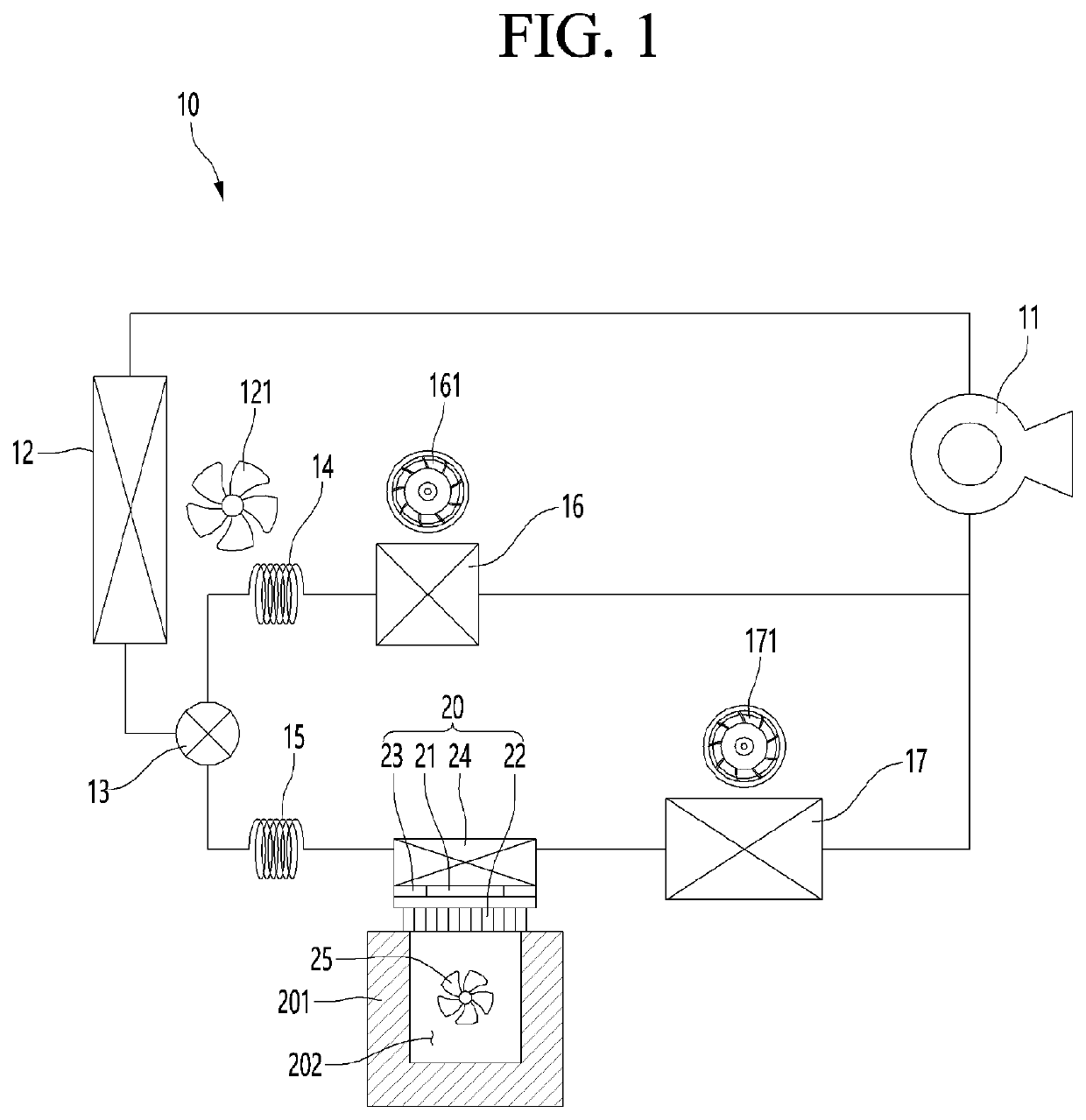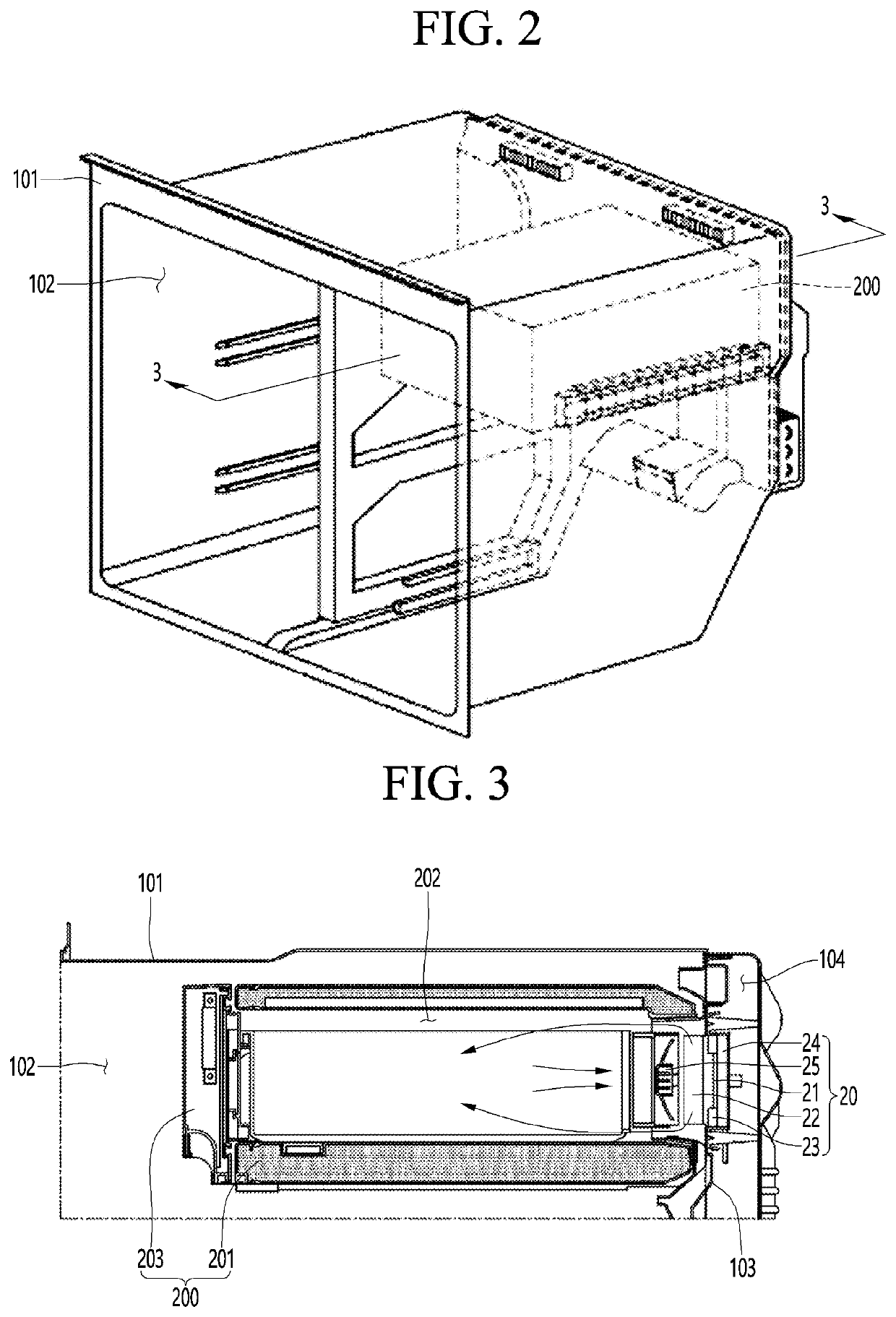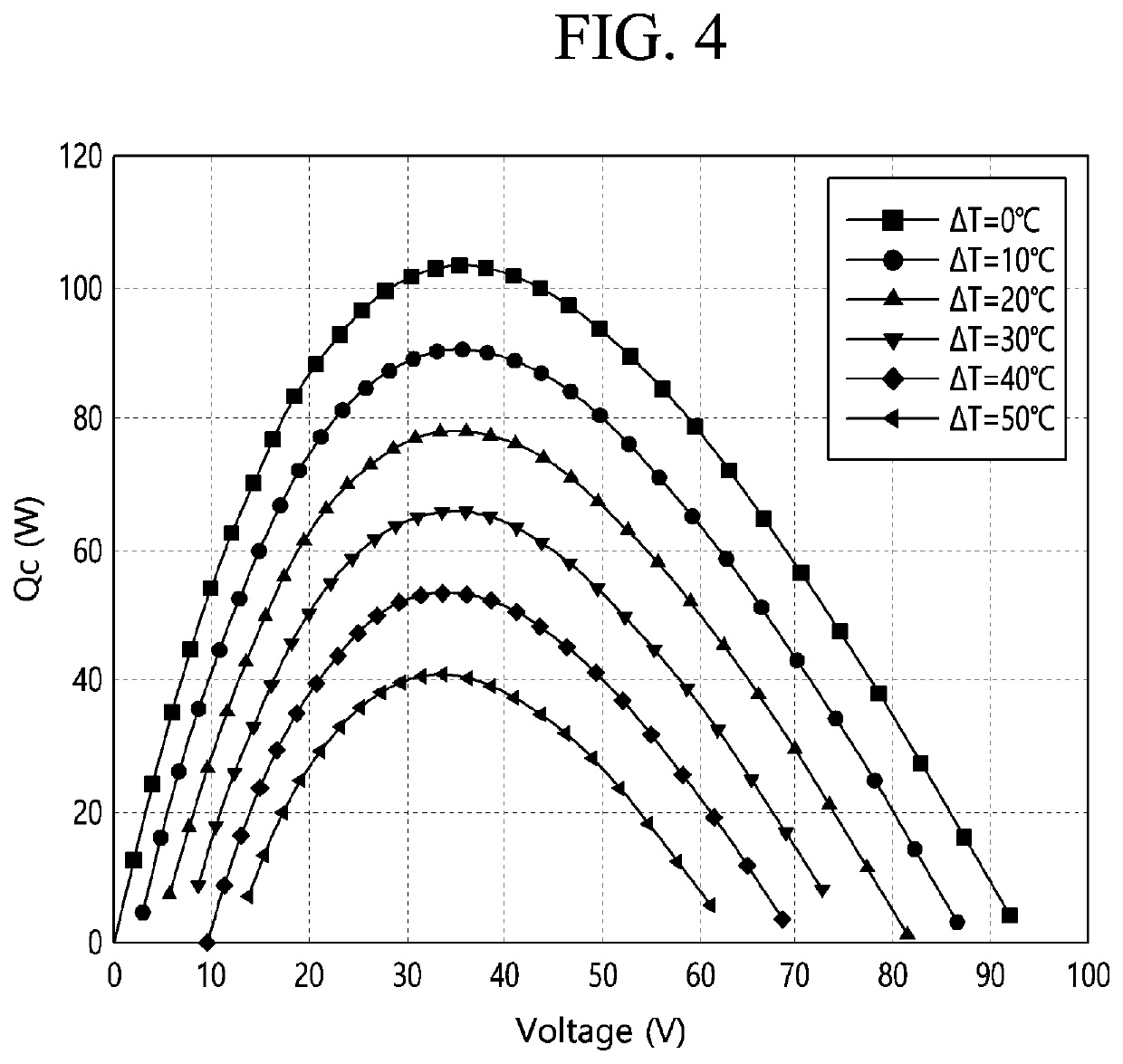Method for controlling refrigerator
a technology for controlling a refrigerator and a refrigerator body, which is applied in the direction of domestic cooling devices, lighting and heating devices, defrosting, etc., can solve the problems of reducing the temperature of the heat absorption surface, affecting the taste of food, and destroying cells, so as to minimize the possibility of the increase of the other load, minimize the amount of liquid refrigerant, and minimize the backflow of the heat load
- Summary
- Abstract
- Description
- Claims
- Application Information
AI Technical Summary
Benefits of technology
Problems solved by technology
Method used
Image
Examples
Embodiment Construction
[0057]Hereinafter, a method for controlling a refrigerator according to an embodiment of the present invention will be described in detail with reference to the accompanying drawings.
[0058]In the present invention, a storage compartment that is cooled by a first cooling device and controlled to a predetermined temperature may be defined as a first storage compartment.
[0059]In addition, a storage compartment that is cooled by a second cooling device and is controlled to a temperature lower than that of the first storage compartment may be defined as a second storage compartment.
[0060]In addition, a storage compartment that is cooled by the third cooling device and is controlled to a temperature lower than that of the second storage compartment may be defined as a third storage compartment.
[0061]The first cooling device for cooling the first storage compartment may include at least one of a first evaporator or a first thermoelectric module including a thermoelectric element. The first...
PUM
 Login to View More
Login to View More Abstract
Description
Claims
Application Information
 Login to View More
Login to View More - R&D
- Intellectual Property
- Life Sciences
- Materials
- Tech Scout
- Unparalleled Data Quality
- Higher Quality Content
- 60% Fewer Hallucinations
Browse by: Latest US Patents, China's latest patents, Technical Efficacy Thesaurus, Application Domain, Technology Topic, Popular Technical Reports.
© 2025 PatSnap. All rights reserved.Legal|Privacy policy|Modern Slavery Act Transparency Statement|Sitemap|About US| Contact US: help@patsnap.com



